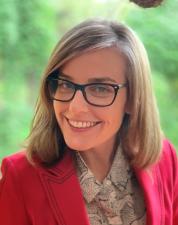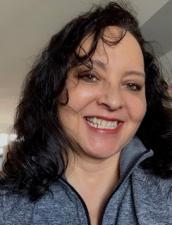Knowledge & News on Women: Fibroid Awareness Month
July 1, 2021
July officially marks the beginning of Fibroid Awareness Month and July 1 is National Wear White Day—a day to show support of all women suffering from fibroids. The goal of this observance is to bring awareness to a common yet under discussed health issue affecting 20 percent to 80 percent of women by the time they reach age 50.
Uterine fibroids are benign tumors that grow in the uterus of women of childbearing age. They are more common in African Americans than White, Hispanic, or Asian women and the cause of fibroids are unknown. While most fibroids do not cause any symptoms, some common symptoms include abdominal pain, heavy bleeding, enlargement of the lower abdomen, frequent urination, complications with pregnancy, reproductive problems and more. Fibroids typically resolve after menopause, but it is a leading reason for hysterectomy (surgical removal of the uterus) in the United States when they cause severe symptoms.
Last year, the FDA approved the first medical option – an oral medication with the brand name Oriahnn – specifically for reducing heavy menstrual bleeding caused by uterine fibroids. Oriahnn is approved for use for up to two years because of concerns of possible bone thinning. We encourage all women to talk to their healthcare providers about uterine fibroids to help understand your risk, diagnosis, managing symptoms and treatment options.
Read More About Fibroid Experiences From FDA Office of Women's Health Staff
This National Wear White Day, FDA Office of Women’s Health staff share their personal experience dealing with fibroids and their hopes for research and medical advancements within the fibroid space.
Bridget, tell us about your fibroid journey.
My uterine fibroid seemed to come out of nowhere – it was discovered by my OB/GYN during a routine exam and grew extremely rapidly, causing pain and anemia within months of learning about it. My doctor recommended a hysterectomy at age 34 for my softball-sized uterine fibroid. I sought a second opinion about a year later (after being in serious denial) and elected to have a uterine artery embolization, which unfortunately wasn’t effective at shrinking the fibroid or reducing bleeding.
What is your current status in your fibroid journey?
At age 38, I was told a hysterectomy is my last option because I am not a good candidate for a myomectomy. I have accepted that I cannot have children of my own and hope to pursue the surgery this year.
What medical advancement changes do you hope to see in the fibroids space?
We need more research into the causes of fibroids. We need to know if there are controllable lifestyle factors that influence their development and growth. When my fibroid was first discovered, I was young and healthy with no family history of fibroids. If there was something I could have done sooner to slow the fibroid’s growth I would have done it immediately. We also need therapeutics that target fibroid growth or shrink the tumors, not just treat fibroid symptoms. Women should have better options for treatments beyond invasive, life-altering surgeries.
Rashetta, how has fibroids impacted your life and what challenges do you have?
I was diagnosed with uterine fibroids in my early 20s but didn’t really address them until over a decade later. Upon diagnosis, my fibroids caused me to have extended menstrual cycles accompanied by heavy bleeding and consistent, reoccurring pain. A healthcare provider advised me to not worry about them if they were not drastically altering my activities of daily living, so I did just that. Every other annual exam for the next 10-15 years, I waited and basically watched them grow over time. Sigh…
What do you wish you knew 10 years ago?
I vividly recall waking up one day and my pain had become progressively worse. I was using sick leave at work and missing out on social activities as I suffered in silence, just trying to make it through the day. After several consultations with various providers, I learned that a surgery to remove my fibroids was necessary if I wanted a slim chance at trying to conceive one day given numerous fibroids impacting my fallopian tubes, as well as the interior and exterior of my uterus. I was devastated and couldn’t help but to think of all the “what if” scenarios had I acted sooner, or took it seriously while I was younger and the fibroids were significantly smaller.
I wish I knew to ask about the size and location of my fibroids early on in my diagnosis. This would have prompted me to think about my reproductive future sooner and seek out additional treatment options given I was certain I wanted to have children one day. Who knows, it could have resulted in me not needing to have 13 fibroids removed via a myomectomy.
What’s one lesson you can share that would really help someone on this journey?
No matter where you are in your fibroid journey, I encourage you to be your own best health advocate. You know your body well and you should immediately seek help or a second opinion when something doesn’t feel or sound right. Ask questions, glean as many treatment options as possible, and locate support from women who’ve experienced fibroids to help guide you. Most importantly, act quickly to address your fibroids if diagnosed, as its critical to your outcome. Despite my battle with fibroids over the years, I was finally able to conceive. I’m now a very grateful mom to two girls, both of whom are lovingly referred to as my miracle babies.
Robin, tell us about your fibroid journey.
There is a history of women in my family having fibroids by their 30s. All resulting in hysterectomies, including my mother. They didn’t seem to have a choice, causing lifechanging decisions and unnecessary suffering for most. Imagine how surprised I was when I turned 40 and did not have fibroids. I had beaten the odds, so I thought!
I had a new GYN due to a change in health insurance. I always had my annual well-woman exam and scheduled my first GYN appointment. I was very surprised when asked, “How long have you had fibroids?” I sat up during exam and said, “Fibroids? I don’t have fibroids!” In a kind and soft voice, she stated she would request an ultrasound. I had three large fibroids and was never informed by the previous GYN, so not sure how long they were there.
I attributed the frequent urination over the years came with just getting older, so never mentioned during annual exams. I was always looking for the nearest bathroom when I left home and tried not to drink fluids before traveling. Friends were always commenting, “You need to go again? You just went!” Later I found out that the fibroids caused the uterus to compress my bladder and resulted in frequent urination for years.
My fibroids were growing on the outside of my uterus. I did not plan to have children but wanted to protect my uterus. I consulted with my GYN, other healthcare friends, and conducted my own research on fibroid treatment before agreeing to a laparoscopic myomectomy to remove the fibroids. I initially received an injection of a medicine for three months to help shrink the fibroids prior to procedure. Hot flashes were so bad my soaked sheets and clothes had to be changed every night. I was tired during the day from lack of sleep. My healthcare provider listened and helped me through that experience. All I could think about was, “Is this what I have to look forward to with menopause? When will it end?”
The treatment was a success. I was initially very angry but knew I had done the best I could, given my circumstances and options. I usually use humor to help get through health challenges and to share my experiences with others. I named my fibroids Huey, Louie, and Dewey. Huey was as large as an orange even after shrinking. Couldn’t imagine how large he was originally!
What advice would you give someone newly diagnosed with fibroid(s)?
I initially felt betrayed by my previous GYN. Why would she not tell me something was growing inside my body and discuss it with me? Especially, knowing the importance of having a healthy uterus. The lesson I learned is to always notify your healthcare provider of a persistent symptom of any kind and don’t be afraid to get a second or third opinion. Find someone you feel comfortable with and will listen to you before making an important decision about your body and quality of life.
Even though I developed additional fibroids both inside and outside the uterus, I am fortunate that my healthcare provider monitored with every visit. First question was always, “Are you having any discomfort or pain? Let me know and I will help you.” As I entered perimenopause, fibroids actually began shrinking, causing fewer symptoms, and did not require additional treatment.
What medical advancement changes do you hope to see in the fibroids space?
More uterine fibroid research is required to determine the root cause(s) of fibroids. Not just relying on treatment with medicine and surgery after fibroids develop.
Additional Resources for Consumers and Healthcare Providers
- FDA’s latest drug to treat heavy menstrual bleeding associated with fibroids in women
- Learn more about laparoscopic power morcellators
- The FDA recommends performing contained morcellation in women when laparoscopic power morcellation is appropriate.
- HHS Office of Women's Health: Uterine Fibroids
- NIH NICHD: Uterine Fibroids
- Medline Plus: Uterine Fibroids





